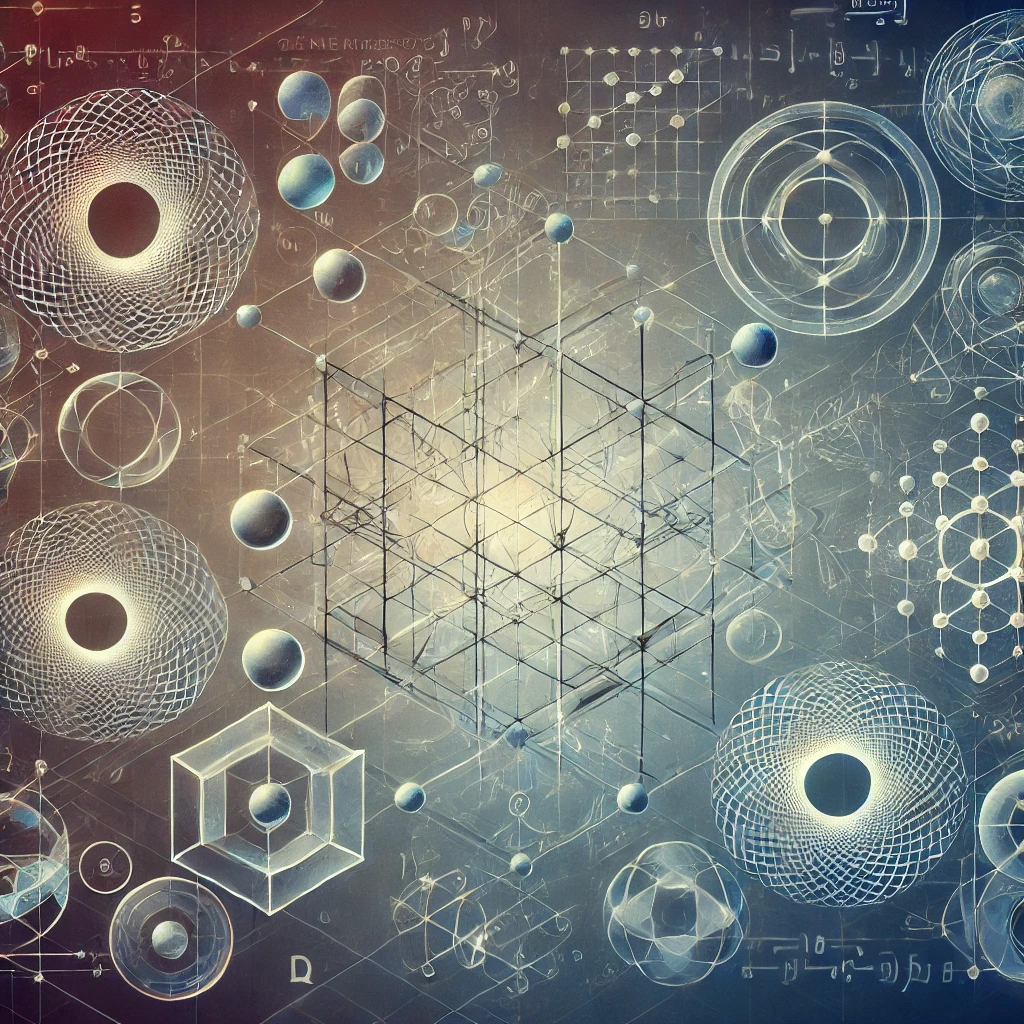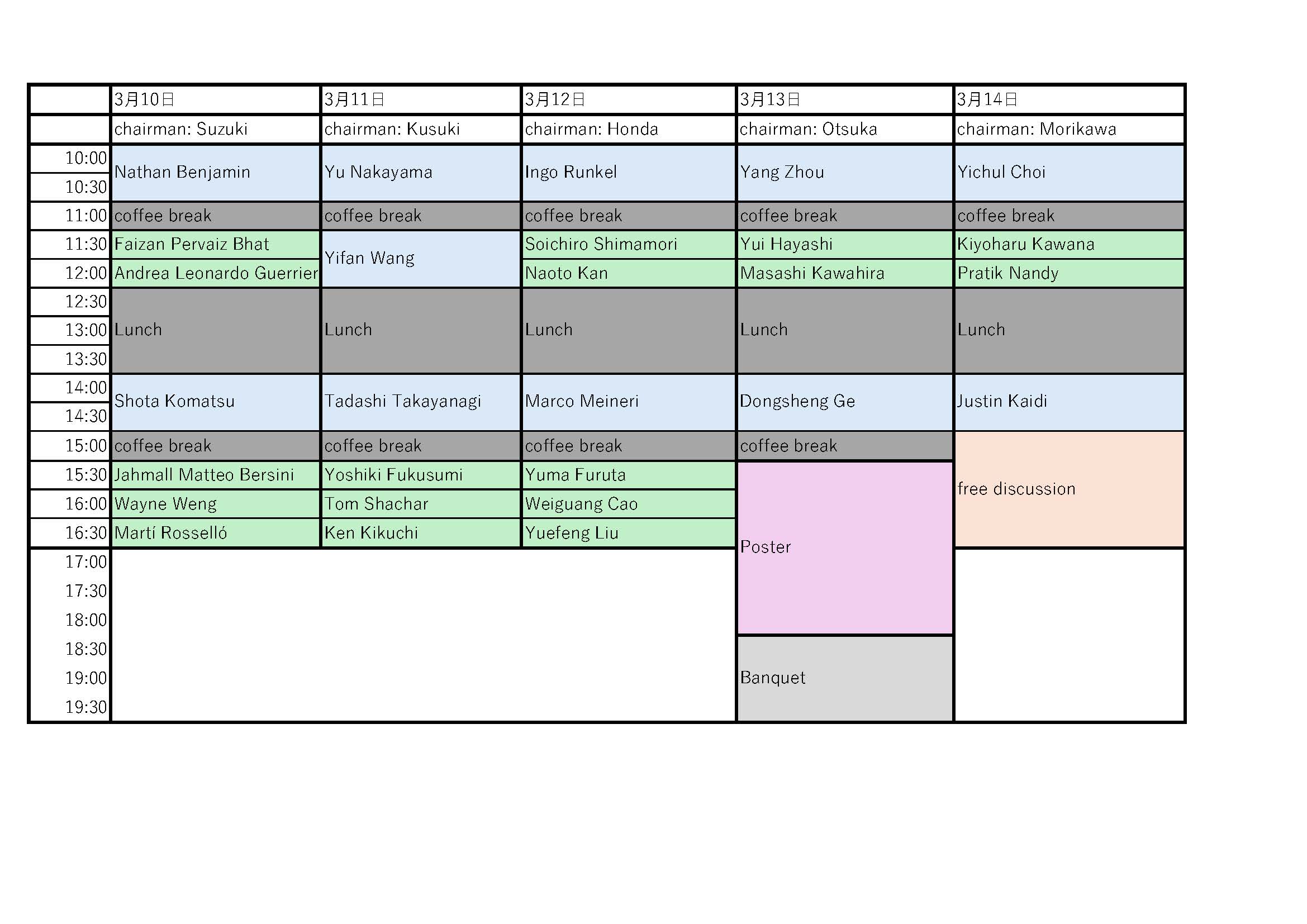- Indico style
- Indico style - inline minutes
- Indico style - numbered
- Indico style - numbered + minutes
- Indico Weeks View
Kyushu IAS-iTHEMS conference: Non-perturbative methods in QFT
→
Asia/Tokyo
Inamori Center (Kyushu University Institute for Advanced Study)
Inamori Center
Kyushu University Institute for Advanced Study
744 Motooka, Nishi-ku, Fukuoka 819-0395 Japan
Description
Overview

The most commonly used approach in the study of QFT is perturbation theory. Indeed, we have succeeded in extracting various physical quantities from perturbative (asymptotic) expansions. However, some physical phenomena cannot be captured through perturbative analyses alone. How can we extract these non-perturbative effects?
In QFTs with conformal symmetry (i.e., CFTs), correlation functions can be computed using a method called the conformal bootstrap. This non-perturbative method differs entirely from the usual correlation function analysis methods of QFT, as it does not even assume the existence of a Lagrangian. Through the use of the conformal bootstrap, we have actually made significant progress in the non-perturbative understanding of CFTs.
Furthermore, according to the holographic principle, CFTs provide a non-perturbative formulation of QFTs with gravity (i.e., quantum gravity). By applying the holographic principle to various non-perturbative results from CFTs, such as those obtained from the conformal bootstrap, we have made remarkable advances in understanding the non-perturbative aspects of quantum gravity. Conversely, the holographic principle is also used to understand properties of QFTs that are difficult to analyze perturbatively, through gravity.
Another frequently used approach for understanding non-perturbative aspects involves the use of interfaces. Although there are various ways to apply interfaces, some examples include:
- Symmetry,
- Non-local probes (such as Wilson lines or entanglement entropy),
- RG interfaces (used as a tool to understand the UV/IR map).
Regarding the first point, the relation “symmetry ⇒ topological interface” is well-known, but in general, topological interfaces do not have a group structure, so the reverse does not hold. However, it has recently been recognized that even topological interfaces without group structures can be as powerful as symmetry (sometimes called "generalized symmetry"), and there has been a dramatic development in understanding the properties and applications of topological interfaces in recent years.
The purpose of this conference is to bring together experts who have contributed to the recent advancements in non-perturbative methods of QFTs, to generate new collaboration research from the multifaceted perspective.
In this conference, we plan to cover the following topics, though we welcome any experts on non-perturbative analysis methods beyond these:
- Bootstrap,
- Non-local operator,
- topological interface = generalized symmetry,
- non-topological interface, generalized fusion
- RG flow/interface,
- boundary
- Holography (understanding non-perturbative aspects from one side to the other).
Invited Speakers
Research talks (* to be confirmed):
- Nathan Benjamin (USC)
- Yichul Choi (IAS)
- Justin Kaidi (Kyushu U.)
- Shota Komatsu (CERN)
- Marco Meineri (U. Turin)
- Yu Nakayama (YITP)
Tatsuma Nishioka (Osaka U.)⇒ Dongsheng Ge (Osaka U.)- Ingo Runkel (Hamburg U.)
- Tadashi Takayanagi (YITP)
- Yifan Wang (NYU)
- Yang Zhou (Fudan U.)
Schedule

To view the abstract for invited talks or short talks, click "View contribution details" on the Timetable, as shown in the figure below. If you open the contribution details for a short talk, a list of subcontributions will appear, allowing you to view the abstract for each short talk.

Registration information
We will have some short talk slots.
There will also be a poster session and we encourage students and young postdocs to present a poster.
The registration deadline will be
01/10/2025 (Fri).
If you need a visa, you may need to register early.
We will provide the support of local expenses for a limited number of young postdocs and students who give a presentation. If you wish to request the support, early registration is required.
Acknowledgment
We will be grateful if you acknowledge this workshop in a paper initiated or conducted during this workshop. Here is a sample of acknowledgments:
- The authors thank Kyushu University Institute for Advanced Study and RIKEN Interdisciplinary Theoretical and Mathematical Sciences Program. Discussions during the "Kyushu IAS-iTHEMS workshop: Non-perturbative methods in QFT" were useful in completing this work.
Organizers
- Yuya Kusuki (Kyushu University)
- Masazumi Honda (RIKEN iTHEMS)
- Hiroshi Suzuki (Kyushu University)
- Tsukasa Tada (RIKEN iTHEMS)
- Osamu Fukushima (RIKEN iTHEMS)
- Hajime Otsuka (Kyushu University)
- Okuto Morikawa (RIKEN iTHEMS)
Supporting Organizations
This conference is supported by Kyushu University Institute for Advanced Study, RIKEN iTHEMS, KAKENHI.



Participants
Aditya Jain
Aleksandr Artemev
AMIYA MISHRA
Ana Đorđević
Andrea Leonardo Guerrieri
Andrei Shavrin
Arundhati Goldar
Ashutosh Tripathi
Atharva Patil
Avi Wadhwa
Bartosz Pyszkowski
Bowen Chen
Chen-Te Ma
Christian Copetti
Coh Miyao
Cristian Andres Rivera Medina
Davide Bason
Davide Morgante
Deep Mazumdar
Dhruva Krishnagiri Sathyanarayanan
Dongsheng Ge
Enoch Leung
Faizan Pervaiz Bhat
Hajime Otsuka
Haruki Yagi
Hiroki Wada
Hiroshi Suzuki
Hirotaka Hayashi
Ingo Runkel
Jaewon Song
Jahmall Matteo Bersini
Jan Albert
Jasper Singh Nongmaithem
Jitendra Pal
Jun Maeda
Justin Kaidi
Kakeru Sugiura
Kaustubh Singhi
Kazunobu Maruyoshi
Ken Kikuchi
Ki-ichiro Sato
Kiyoharu Kawana
Knight Hirasaki
Komatsu Shota
Konstantinos Roumpedakis
Majdouline Borji
Marco Meineri
Martí Rosselló
Masashi Kawahira
Masazumi Honda
Matan Algrabli
Matteo Lotito
Meenu .
Mikhail M. Pavlov
Mitch Weaver
Mitsuyo Suzuki
Mohammad Akhond
Mohammad Reza Khansari
Motokazu Abe
Naoto Kan
Nathan Benjamin
Nayan Prahladbhai Chauhan
Nicolò Zenoni
Okuto Morikawa
Osamu Fukushima
Peng-Xiang Hao
Pratik Nandy
RAVI SINGH
Riasat Sheikh
Ryo Namba
Sandipan Bhattacherjee
Saswato Sen
Semanti Dutta
Sergio Ernesto Aguilar Gutierrez
Sho Tanigawa
Soichiro Shimamori
Soma Onoda
Stefan Đorđević
Subhadeep Rakshit
Sunil Kumar Sake
Tabasum Rahnuma
Tadashi Takayanagi
Taiichi Nakanishi
Takafumi Kai
Takahiro Uetoko
Tokiro Numasawa
Tom Shachar
Tomoki Nakanishi
Toshiki Onagi
Toshio Nakatsu
Tsubasa Oishi
Tsukasa Tada
Vaibhav Gautam
Vishal Nath
Wayne Weng
Weiguang Cao
Wen-Xin Lai
Xia Gu
Yamato Honda
Yang Zhou
Yichul Choi
Yifan Wang
Yongchao Lu
Yoshiki Fukusumi
Yu Nakayama
Yu-ki Suzuki
Yuefeng Liu
Yui Hayashi
Yuichi Koga
Yuji Satoh
Yuki Furukawa
Yuma Furuta
Yutaka Ookouchi
Yuya Kusuki
Zhaojie Xu
